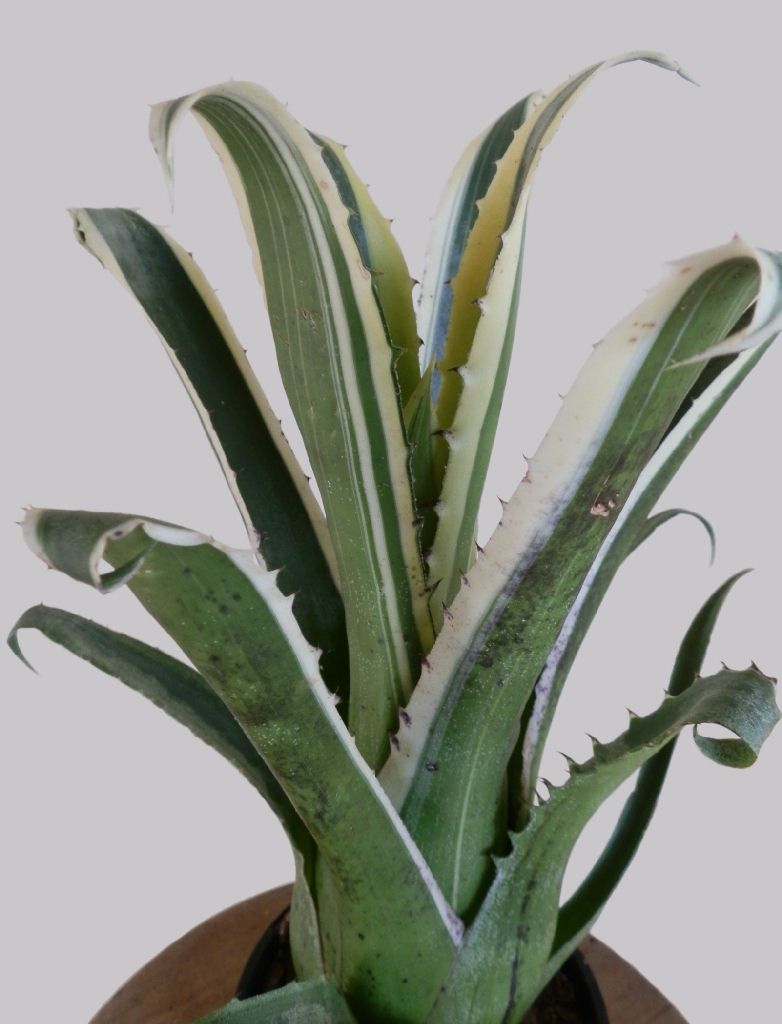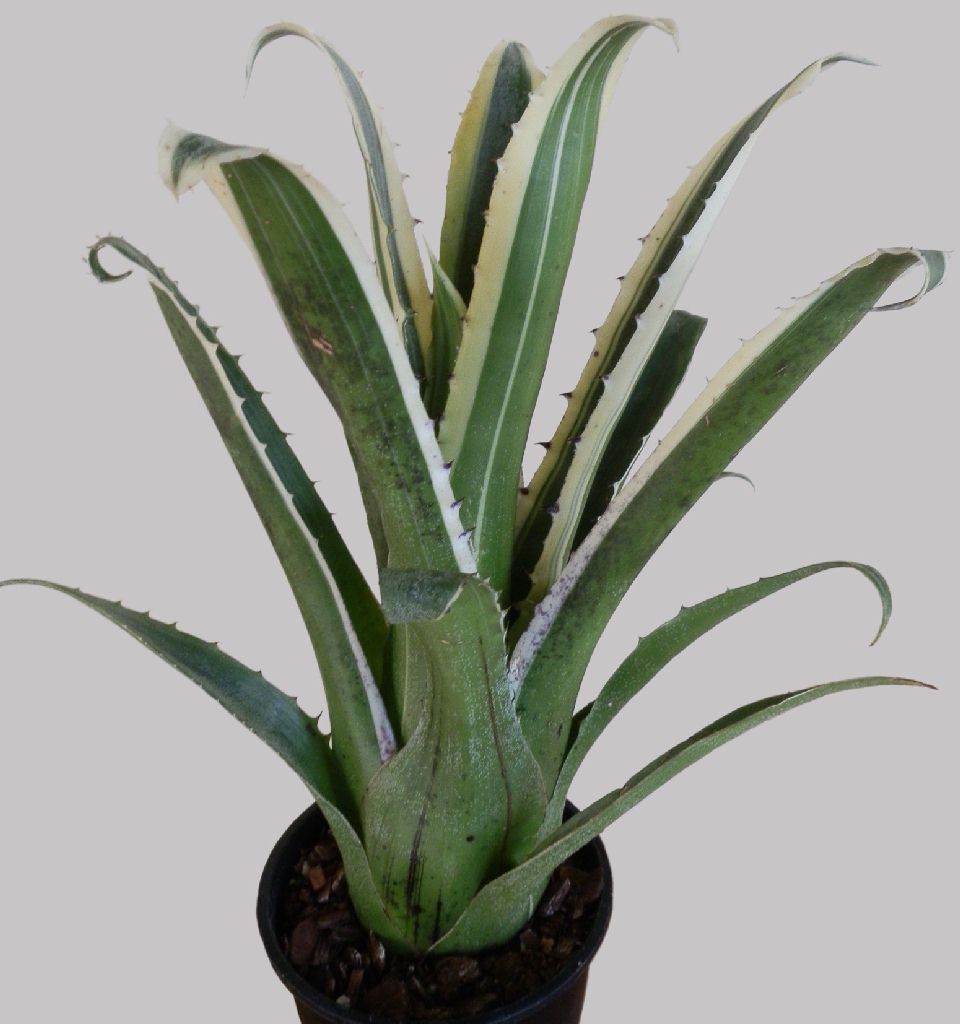

Hohenbergia ‘Karla’ by H Prinsler in Die Brom 2: 60-61. 2013
In 1987 I saw some nice looking tank-type bromeliads on a shelf at the Femo Tillandsia nursery in Langenfeld, Germany. Mr. Mowinski told me that these plants were collected by Prof. Werner Rauh and the Brazilian cactus specialist Leopoldo Horst on a trip in Brazil. I was able to buy all the plants at that time. At home the plants were sorted and potted and put into my Bromeliad collection. There were three different types. Whether they were three different species, was not known at that time. I found out that they belong to the genus Hohenbergia. One species was determined by me to be Hohenbergia leopoldo-horstii. In the next few years I began to propagate the plants to build a stock of them. I hit on the idea of cultivating them more like succulents because of their greyish scales that made them look like they were covered with flour, their large teeth and hard leaves. The plants got more light and a less humus-rich substrate. Under these conditions the leaves coloured light grey and the shape of the plants got more bulbous.
A few years later the stock of these plants had grown and I gave away the first plants to people who were interested in them. One day I saw on one of the plants a leaf which had a white longitudinal stripe. The following year I took off the pups from this plant. The pup that had been growing in the axil of the striped leaf already showed some leaves with white variegation. In the following years, the progeny of this one was propagated and a type with uniform white marginal variegation was selected. After a long time, 25 years by now, I have a stock of 150 uniformly variegated plants. I am very happy about my success since in my collection I already grow many species and hybrids with white variegation and I always had an eye out for these.
Some three years ago Uwe Scharf from Leipzig, Germany told me that my Hohenbergia leopoldo-horstii was actually a H. magnispina. I got a true H. leopoldo- horstii from him.
The plant I am introducing here is named for my wife Karla: Hohenbergia magnispina 'Karla'. The two other types of Hohenbergia that I bought long ago are H. utriculosa (det. W. Till 2007) on the one hand and a H. sp., that still has to be identified, on the other hand.
All three types have similar inflorescences. Sometime in the future a scientist must determine if these three types are really three different species.
The plants should be grown quite bright. The substrate should not be too humus-rich but more like a substrate for succulents. This is closer to their terrestrial life habit in their natural environment. After hardening the plants off in spring they can be grown outside in full sun during the summer.